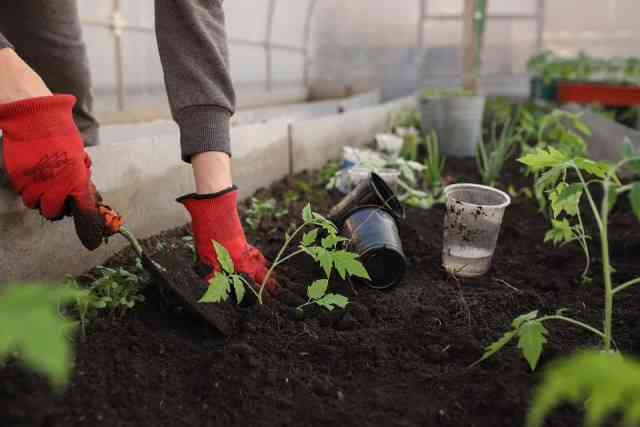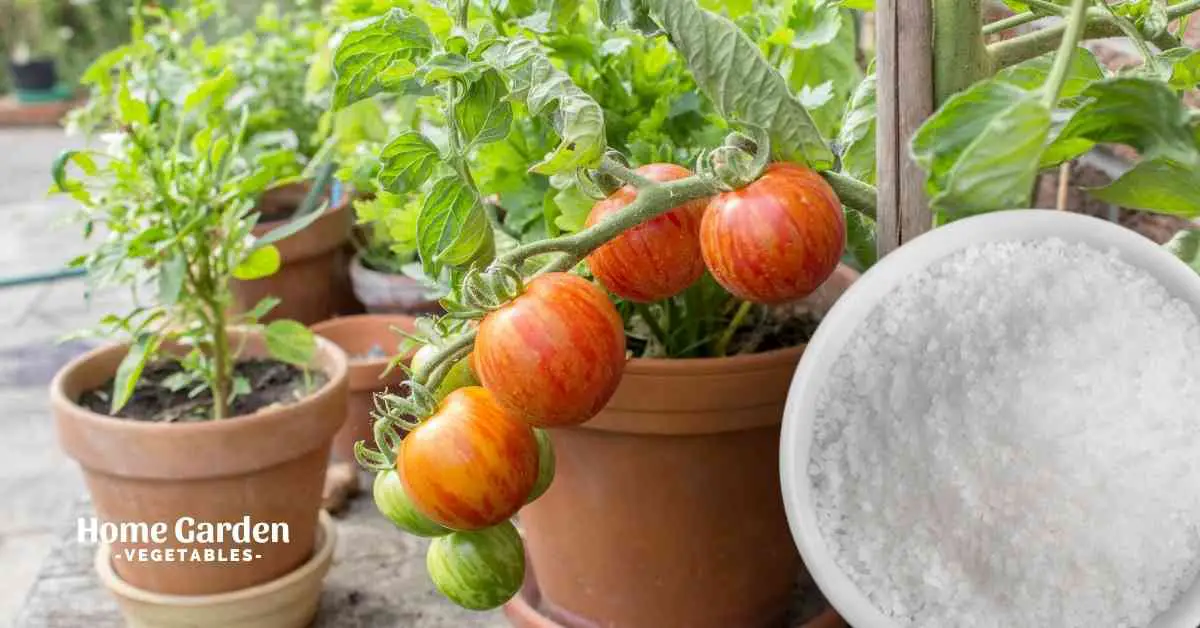Epsom salt is a mineral compound of magnesium and sulfate. It exists naturally and is treasured by both humans and plants for the amazing benefits it offers. As a self-care product, it helps relieve sore muscles and stress, acts as a laxative for treating constipation and as an anti inflammatory to treat sunburns. Epsom salt also has multiple uses in your garden. When applied as a foliar spray or soil application, epsom salt can bring bigger, more flavorful yields. Continue reading and you’ll find out all about using epsom salt on your tomato crop and its benefits.
How Epsom Salt Helps Tomato Plants
Epsom salt offers multiple benefits to tomato plants. It’s a compound of magnesium and sulfur. Plants need both magnesium and sulfur to grow and produce flowers and fruit.
Reader Poll: What online courses would interest you?
- Magnesium For Plants
Magnesium is important for seed germination, generation of chlorophyll and fruit development. Magnesium also enhances the uptake of certain other important minerals, including nitrogen, phosphorus and sulfur.
If your tomato plants lack magnesium, you’ll observe one or more of the following symptoms:
- Yellowing of leaves.
- Interveinal chlorosis (yellowing between the veins)
- Curling of leaves
- Spindly growth
- Lower yields
- Sulfur For Plants
Sulfur is another major nutrient that all plants require for the synthesis of vitamins, amino acids, proteins and enzymes. While sulfur deficiency isn’t common in tomato plants, magnesium deficiency is often a problem.
Subscribe to our newsletter!
- The Role Of Epsom Salt
A soil test will further clarify if your soil lacks nutrients. Epsom salt is easily available in garden centers and hardware stores and is reputed to start acting against the deficiency symptoms within 2 days. However, if your soil is nutrient deficient, you’ll also need a long-term fix by amending with organic matter.
What To Expect From Epsom Salt Applications To Tomato Plants?
With the recommended epsom applications at the right times, here’s what you can expect from your tomato crop:
- Improved seed germination
- Plants grow healthier
- They are less susceptible to diseases
- Prolonged harvest period
- Tomatoes are larger, brighter and more attractive
- Tomatoes are sweeter and juicier
When and How To Apply Epsom Salt To Tomato Plants
Tomato plants can benefit from epsom salt during multiple stages in the growing season. Regular use will maintain a steady supply of the essential nutrients to the plants to maintain their vigor and health.
- At Planting Time

The first application of epsom salt is at the time of planting seeds or transplanting seedlings into the garden. Just add two tablespoons of epsom salt at the end of the planting hole and mix it into the dirt before planting.
- Mid-Season Application As Side-Dressing
As the plants grow bigger, start regular applications of epsom salt to prevent deficiency symptoms. Sprinkle 1 tablespoon of epsom salt for every foot of the plant height around the base of the plant. Work it into the topmost layer of the soil gently, taking care not to disturb the developing roots. Repeat the applications every 6 weeks, starting as soon as the leaves appear, until the end of the harvest season.
- Foliar Spray During The Season
Soil applications impact the plants slower than foliar applications. If you find magnesium deficiency symptoms in your tomato plants, foliar spray is a good option to cater it in time. Mature tomato plants can also benefit from foliar spray of epsom salt as soon as blooms start to appear. Mix one tablespoon of epsom salt in a gallon of water in a sprayer bottle. Spray it on the plants once a month to increase yield size and quality.
- Epsom Salt For Potted Plants
Potted tomato plants can also benefit from epsom salt applications. Watering once a month with epsom salt solution can help maintain a steady nutrient supply to the plants and improve their health and yield. Mix two tablespoons of epsom salt in a gallon of water and use it to water the plants once a month.
Can Epsom Salt Treat Blossom End Rot?

A common question that gardeners ask is if epsom salt can be used to treat blossom end rot. The answer is NO, it can’t. Despite the several benefits it offers, this is one thing that the compound cannot do.
Blossom end rot is a disease induced by calcium deficiency in plants. Epsom salt adds magnesium to the soil and magnesium and calcium are two elements that compete for their availability to the plant roots. An excess of magnesium through an overdose of epsom salt could mean a shortage of calcium, increasing the risk of blossom end rot in plants.
Be careful when applying epsom salts to the tomato crop, especially when the soil lacks calcium. Always use the salt in moderation, according to the dosage recommended earlier in the same post.
Other Uses Of Epsom Salt In The Garden
Other than tomatoes, many other plants can also benefit from epsom salt applications. You can also apply it to cucumbers, peppers and roses to boost plant vigor and enhance flower and fruit production. Gardeners also use it to kill old and diseased tree stumps. Regular weekly applications of epsom salt solution can kill the stump in 8 to 10 weeks.
Conclusion
Epsom salt is quick-acting, inexpensive and an excellent way to improve the quality and yield size of your homegrown tomatoes. Regular applications can help maintain a healthy tomato crop, free from diseases and other problems so you can expect improved yields at harvest time!

